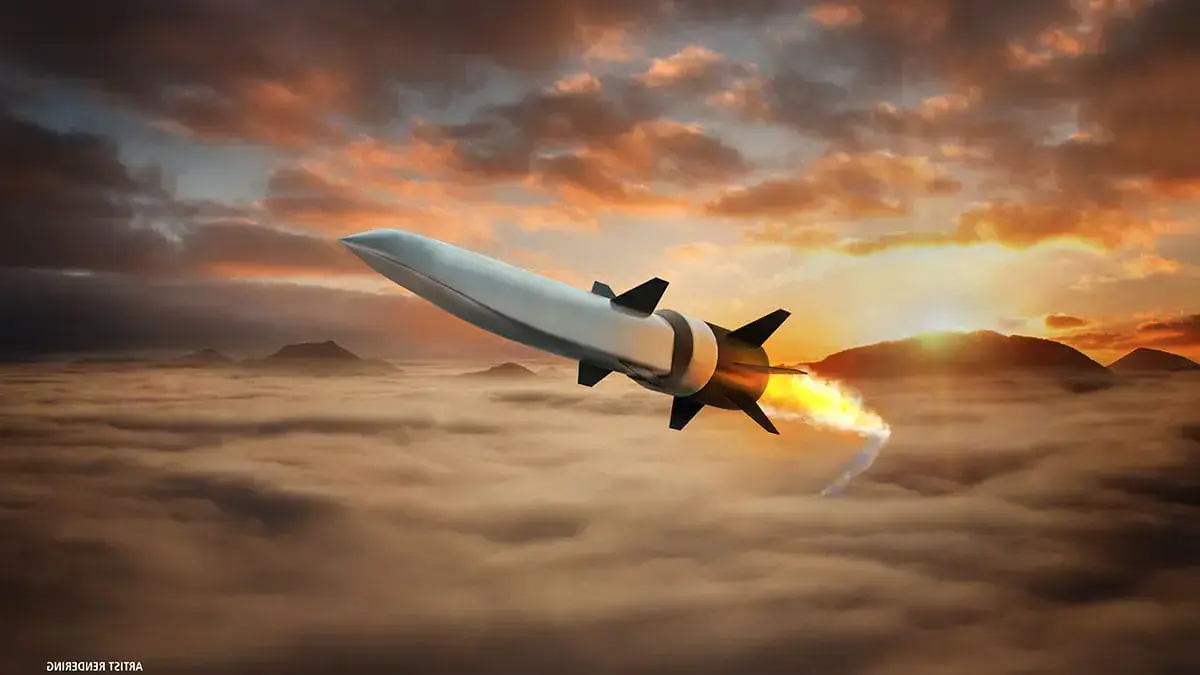Air Force faces delays, cost overruns in HACM program
Air Force leaders told the Government Accountability Office that the first design review of the Hypersonic Attack Cruise Missile program has been postponed until September 2024 — a six-month delay — because engineers needed additional time to finalize the missile’s hardware design. Because of the change, the service will now conduct just five flight tests before moving toward accelerated fielding in fiscal year 2027.
Raytheon, a subsidiary of RTX, leads the HACM program, which focuses on an air-breathing scramjet missile capable of traveling at speeds greater than Mach 5 and maneuvering in flight. Northrop Grumman is supporting the effort as a subcontractor responsible for developing the scramjet propulsion system. An Air Force spokesman declined to provide an update on the current status of the program, citing tight security controls, while Raytheon did not respond to DefenseScoop’s questions.
The GAO also reported that Raytheon expects the program’s costs to “significantly exceed its baseline,” although Air Force officials said that eliminating two flight tests could help offset some of the increase. As of January 2025, HACM’s development costs were about $2 billion — up two percent from the $1.9 billion estimate made in 2024, according to the watchdog’s review.
“In response to the urgency of global competition and emerging threats, the Air Force transitioned HACM from a prototype demonstration to a program aimed at delivering operational capability in fiscal year 2027,” the report said. “With this transition, the focus is on scheduling and accelerating the delivery of an operationally relevant missile – a minimum viable product that meets user-defined requirements – by 2027.”
U.S. and Australia Advance Hypersonic Attack Cruise Missile Program
The U.S. Air Force awarded Raytheon Missiles and Defense a $985,348,124 contract to design and demonstrate Hypersonic Attack Cruise Missile (HACM) prototypes, reinforcing its commitment to strengthening collaboration with allies and partners to defeat strategic rivals.
HACM is an air-launched, scramjet-powered hypersonic weapon designed to threaten high-value targets in disputed territories from extended standoff ranges.
“HACM represents how we build and integrate combat capabilities with our partners on the ground,” said Air Force Chief of Staff Gen. C.Q. Brown, Jr. “This weapon will give commanders tactical options to use fighters against critical, time-sensitive targets, while preserving bombers for larger tactical missions.”
In 2020, the Air Force began a multi-year collaboration with Australia, known as the Southern Cross Integrated Flight Research Experiment (SCIFIRE), to develop air-breathing hypersonic missile prototypes.
In June 2021, the service awarded three 15-month SCIFIRE contracts to Boeing Co., Lockheed Martin Corp., and Raytheon Technologies Corp. to complete the initial design of the hypersonic cruise missile.
Through SCIFIRE, the U.S. and Australia continue to advance HACM development, with Australian test facilities supporting the first full-scale flight trials.
Air Vice Marshal Robert Denny, AM, Head of Air Force Capability for the Royal Australian Air Force, said the SCIFIRE effort offers an opportunity to gain insights and shape the future of hypersonic weapon design and procurement.
HACM: Advancing the USAF’s Hypersonic Capability
HACM is one of the most advanced hypersonic programs, designed to give the US Air Force a real ‘hypersonic’ weapon, as opposed to early-stage systems currently in the field, such as Russia’s Zircon missile.
“Russia originally claimed that Zircon had an operational scramjet,” said William Freer, a national security research fellow at the Council on Geostrategy. “But the debris found in Ukraine disproved those claims—the missile actually relies on a ramjet engine.”
In the near future, Northrop Grumman’s scramjet will power Raytheon’s missile, bringing the program closer to reality. “A scramjet is more complex than a basic solid rocket motor but still much simpler than the turbine engines used in certain jets and cruise missiles,” explains one industry expert.
The efficiency of a scramjet comes from engineering, not mechanics. “There are virtually no moving parts inside it. Performance depends entirely on the aerodynamic design and how the forces are managed,” the expert added.
About Raytheon Technologies
Raytheon Technologies Corporation is a global leader in aerospace and defense, providing advanced systems and services for military, commercial and government customers. Its four core businesses – Collins Aerospace, Pratt & Whitney, Raytheon Intelligence & Space, and Raytheon Missiles & Defense – provide advanced solutions in avionics, cyber defense, directed energy, electric propulsion, hypersonics and quantum technologies. Formed in 2020 through the merger of the aerospace businesses of Raytheon Company and United Technologies Corporation, the company is headquartered in Waltham, Massachusetts.
About Northrop Grumman
Northrop Grumman is a global security and technology company focused on innovation and discovery. Its advanced solutions help protect the United States and its allies, providing the tools needed to connect, defend, and advance strategic objectives. With more than 90,000 employees worldwide, Northrop Grumman drives progress by tackling complex challenges and redefining what is possible every day.
Pentagon Expands Funding for Hypersonic Cruise Missile Development
The Pentagon announced the contract award in late December, though only limited information was shared at the time. The latest action adds to the nearly $1 billion previously awarded to Raytheon in 2022 to advance the air-launched hypersonic weapon. The additional funding will support further research, development, testing, and evaluation of the HACM program through 2028, an Air Force spokesperson confirmed to DefenseScoop.
“Following the initial award, the Department of the Air Force initiated parallel RDT&E efforts to improve the missile’s capabilities,” the spokesperson said in an email. “These improvements required the scope, resources, and timelines provided by the original mid-level acquisition agreement.”
Neither the Air Force nor Raytheon released specifics about the capability upgrades funded under the modification. However, the official contract notice stated that $27 million in accounts receivable in fiscal year 2023 was to be paid to Raytheon at the time of award.
FAQ
The U.S. Air Force wants hypersonic weapons because global rivals like China and Russia are pursuing their own hypersonic programs. These missiles travel at speeds in excess of Mach 5, making them very difficult to track and intercept. For the Air Force, having a working hypersonic missile means staying ahead of the curve in modern warfare and ensuring that American jets can strike quickly and safely from long distances.
The HACM uses a scramjet engine built with Northrop Grumman. Unlike a typical rocket, a scramjet powers itself by pulling air from the atmosphere, making it faster and more efficient. It is designed to fly low, maneuver in flight and reach speeds in excess of Mach 5. This gives the air force a huge advantage in hitting high-value targets before the enemy can respond.
The US and Australia are working together under a project called SCIFIRE. Australia is providing test sites and research support for missile tests. Both countries see this partnership as a way to strengthen their defense ties and accelerate progress. The idea is to share knowledge and ensure that both forces are ready with advanced weapons in the Indo-Pacific region.








Leave a Reply